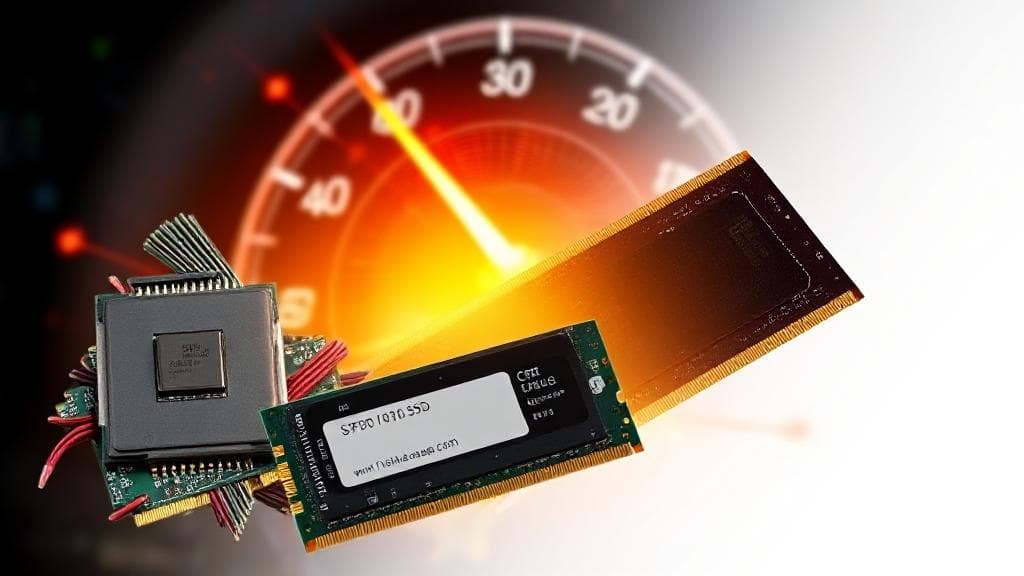Introduction to Computer Upgrades
In the ever-evolving world of technology, keeping your computer up to speed can be a daunting task. Whether you're a gamer, a professional, or just someone who wants a faster machine, upgrading certain components can significantly enhance your computer's performance. Understanding which components to upgrade can make all the difference in improving speed, efficiency, and overall user experience.
1. Solid State Drive (SSD)
Perhaps the most noticeable upgrade you can make is switching from a traditional Hard Disk Drive (HDD) to an SSD. Modern SSDs like the Samsung 970 EVO Plus can deliver read speeds up to 3,500 MB/s.
Benefits:
- Faster boot times
- Enhanced program loading speeds
- Quicker file transfer rates
- Improved system responsiveness
- Better reliability (less prone to mechanical failure)
For more information on SSDs, check out this comprehensive guide.
2. Random Access Memory (RAM)
Increasing your system's RAM can significantly improve multitasking capabilities. Consider these guidelines:
- 8GB is the minimum for modern computing
- 16GB is ideal for most users
- 32GB or more for heavy multitasking and professional applications
Benefits:
- Improved Multitasking: Run more applications without slowing down
- Faster Data Access: Quicker loading times for applications and files
Pro tip: Always check your motherboard's maximum supported RAM and compatible RAM speeds before purchasing.
3. Graphics Processing Unit (GPU)
For gamers and creative professionals, upgrading the GPU can lead to better graphics performance and faster rendering times. Key considerations include:
- Power supply requirements
- Physical case space
- Monitor compatibility
- Budget constraints
- VRAM capacity
- Ray tracing capabilities
Consider the NVIDIA GeForce RTX series or AMD's Radeon RX 6000 series for top-tier performance.
4. Central Processing Unit (CPU)
The CPU is often referred to as the brain of your computer. Popular choices include the Intel Core i9 and AMD Ryzen 9.
Considerations:
- Socket compatibility with motherboard
- Cooling requirements
- Power consumption
- Future upgrade path
5. Cooling System
As you upgrade components, proper cooling becomes crucial. Here's a comparison of cooling options:
| Cooling Type | Pros | Cons |
|---|---|---|
| Air Cooling | Affordable, reliable | Bulky, potentially noisy |
| AIO Liquid | Efficient, compact | More expensive, potential maintenance |
| Custom Loop | Best performance | Highest cost, complex installation |
6. Power Supply Unit (PSU)
A quality PSU is essential for system stability and future upgrades. Look for:
Storage Configuration
Consider implementing a tiered storage approach:
- Primary Drive: 250GB-1TB SSD for OS and programs
- Secondary Drive: Larger SSD or HDD for games and media
- Backup Drive: External or network storage for data security
Recommended Upgrade Priority
For most users, the recommended upgrade order is:
- SSD (if not already present)
- RAM (if under 16GB)
- GPU (for gaming/graphics work)
- CPU/Motherboard
- Cooling system
- Power supply (if needed for other upgrades)
For further reading on building and upgrading PCs, visit PCPartPicker or Tom's Hardware for tools and resources to help you plan your next upgrade.
